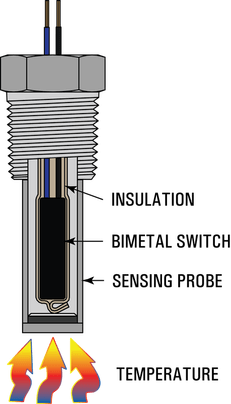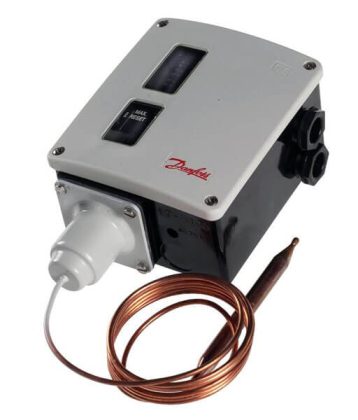Temperature is a measure of the average heat or thermal energy of the particles in a substance. Since it is an average measurement, it does not depend on the number of particles in an object or the object’s size.

A major advantage enjoyed by conductive thermal controls is the ability to easily tailor them to meet your particular needs. They are extremely versatile–beginning with the bimetallic element at the heart of the device.
The major difference between bimetals lies in the internal resistance of each given type. Und er a heat load, each type of bimetal will exhibit a different internal resistive level. It is commonly referred to as the resistivity of the bimetal.
er a heat load, each type of bimetal will exhibit a different internal resistive level. It is commonly referred to as the resistivity of the bimetal.
The resistivity of any particular bimetal is expressed in ohms per circular mill foot (ohms cm/ft) and determines how quickly a change in temperature will make the bimetal deflect thereby breaking a circuit. The flexivity of a bimetal is the amount it bends at a certain temperature.
The open thermal control contains a switch with a bimetal electrical contact support. As the switch begins to increase in temperature, the bimetal heats up until it reaches the temperature where it deflects and thereby opens the electrical contacts. When the temperature decreases, the bimetal returns to its original shape and closes the electrical contacts.
Also Read: Basics of Switches & their applications